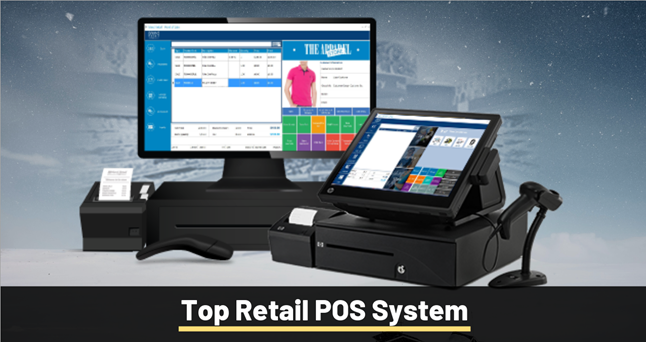Businesses need an efficient retail POS system in order to succeed. Without such a system, managing cash flow, processing sales orders, monitoring the inventory, handling customer relationships, and accepting payments for orders would be challenging.
A reliable POS system is not only a necessity for the smooth functioning of business operations, big or small, but also for saving money. POS systems can reduce retailer expenses by almost 10%. Therefore, when you choose a retail POS, you need to look into many factors. A good POS will minimize human errors, help you make better decisions, enhance customer experiences, generate solid returns on investments, and save time, making the operations more efficient.
Types Of Retail POS Systems That You Should Know About

Not all retail POS systems will be equally efficient. You need one that can cater to your particular business needs. POS systems may range from a very easy-to-use mobile payment processor to one that can run a large business, spread across many locations. Some of the different types of POS systems have been highlighted as follows:
Mobile POS
These services are equipped to handle payments and inventory and buyer information. You will need an app in most cases, and this is typically free of cost. Most payment processor providers will also offer you a free credit card reader. If you do not need to handle a big inventory and want to ensure mobility, it is best to choose a mobile POS. It needs a portable printer for printing receipts. You could also send these to buyers directly through emails. For instance, this system is best suited for event vendors, street vendors, contracted professional services, lawn care services, mobile services, and daycare providers, etc. to name a few.
Terminal POS
You will find these terminals at counters, and they need the Internet or cloud software to work. They may be software or hardware-based. These usually come as a one-in-all solution and provide cash drawers, printers, scanners, and other necessary hardware. You can count on round-the-clock support. Employees need to be given special permission to run this software, so not all of them will have access. You can have this retail POS integrated with Wi-Fi portable devices, receipt printers, barcode scanners, cash drawers, patron tablet ordering, kitchen printers, and even in online ordering system in big restaurants. These are mostly found in grocery stores, antique stores, spas, salons, and electronic stores.
Tablet POS
These iOS or android-based POS systems are very popular as they require very little investment upfront. In fact, you may even start off with a tablet you have at home. There are some tablet POS systems that offer free credit card processing, while some charge a nominal amount. Some of these tablet POS systems can handle complex situations like inventory and employee time-tracking, but some are designed for very simple uses. This retail POS is mostly used by juice bars, pizzerias, salons, small theaters, gift shops, quick-service restaurants, and small retailers.
Online POS
Here, you get to employ your own hardware that is usually a tablet or PC. Startup costs are economical, and this is perfect for a low-volume business. So, you can also settle for a regular printer. Online POS services can be accessed from anywhere, through any device. You will find this POS system used mainly by art galleries, small retail outlets, pet groomers, and small cafes.
Self-Service Kiosk POS
These are specialized solutions meant for specific uses. For instance, these retail POS systems can be used to monitor patient check-ins, movie ticket sales, managing parking spaces or looking up groceries. These are also used in a big retail store to help customers browse through product prices and check availability.
All-in-one POS
These refer to solutions that provide both mobile and desktop POS systems. These are meant for the established retailers, and they will let you run multiple processes.
When you choose the Shopify POS, you simply have to download the Shopify app from the Google Play Store or the App Store. You can then start adding products for selling. The online store can sync with this retail POS, helping you manage the whole business through one platform. When you add new products or update the inventory, the changes will be updated all over in real-time.

